Collection: Blüthner Pianos
“Blüthner instruments can really sing” — Wilhelm Furtwangler
"Orchestras and pianists alike are impressed by the sound, the shading of the dynamics, and the outstanding performance of the instruments. Chamber musicians praise the tonal character as being full of charm with a sound comparable to a violin cello. Singers love the golden tone for accompanying the human voice. Musicians and composers affectionately call the Blüthner "the poet among the pianos" Blüthner.
What is special about Bluthner Pianos?
What separates Bluthner from all other piano makers is their manufacturing. Each upright and grand piano consist of three subassemblies. It is Bluthner's ability to coordinate all three aspects with one another that makes them so special.
There is huge tension from the strings that amounts to almost 20 tones when a piano is tuned to 440hz. The cast iron frame of the piano must be able to withstand this. As such Bluthner use a re-crowned soundboard which is glued into place and provides the strength needed. This allows the forces to be distributed right from the rim across to the strong back posts. The back posts are then given extra strength by being positioned in a fan like manner.
The 2nd aspect is the Iron frame. This takes all the force from the strings so needs to be firmly attached to the inner casing. As such Bluthner developed their own frame that is not only appealing to the eye but also able to ensure that no tonal value is lost, Bluthner even state that the frame contributes to the tonal value.
Bluthner ensure the perfect outcome by fitting all their frames in house. They hand drill over 600 holes for pins, tuning pins and bolts.
The third and final key aspect is the pin block. This has the task of supporting the tuning pins and of course the huge 20 tonnes that is created by the strings. Bluthner have an additional support of hardwood bushing where the tuning pin passes into the iron frame. This provides complete stability and reduces the bench load of the pin. The rest plank which is part of the same area is compressed hardwood which has been placed at 90 degrees to the wood fibre. This allows extra strength and ensures that the tuning pin is secure on all sides.
Bluthner have always set the pace when it comes to piano manufacturing and this continues in their modern day instruments. Bluthner are also famous for the Aliquot string - an extra string that is added in the treble section. this is a unique idea to Bluthner.
Bluthner Piano Manufacturing Process
The aliquot string
All Blüthner grand pianos (with the exception of the model 11, our smallest grand piano) are equipped with the famous Blüthner Aliquot string. In the last treble section of our grand pianos, each note is assigned a fourth string. This fourth string is slightly raised from the others and is not struck by the hammerhead. The aliquot string resonates in unison with the note played, therefore amplifying the note without producing an aggressive or metallic sound. The system was developed by Julius Blüthner over a century and a half ago and is considered one of the many features behind the famous Blüthner golden tone.
The Inner Rim and Beam Construction
The Iron Frame

The iron frame is cast in a quartz sand mould using traditional methods. To withstand the enormous tension of nearly 20 tonnes the design of each frame is precisely calculated and manufactured. Each frame is seasoned outside for two years before being sprayed to a high quality finish and individual fitted to an instrument.
The Soundboard and Bridges

Only the finest white high mountain spruce from selected alpine stock is used for the production of Blüthner soundboards. The wood must have straight running grain and at least seven annual rings per cm. Bluthner's soundboards are seasoned for many years to ensure maximum resonance and durability. The shape of a Blüthner soundboard is unique – a cylindrical curve with a tension evenly matched to the strings. Before the soundboard can be installed, it is pre-tensioned and crowned in a process developed by Blüthner. The ribs are shaped to fit the curvature required and therefore the tensions of the soundboard remains in-tact over the decades. In fact, even under difficult climatic conditions, the curvature remains in a constant form since not only the rib structure will hold it in place but also the red beech inner rim is pre-formed to the correct angle to receive and retain the soundboards curve tension. As the soundboard is pre-stressed in this fashion, it can be fitted precisely and remain under tension permanently.
The bridge is adapted to the tension and curvature of the soundboard in its optimum position. This ensures the string vibrations in their full spectrum are transferred to the soundboard. Both the bass and treble bridges are constructed from European maple.
The Pin Block

The pin block or wrest plank is made of 14 highly compressed hard wood layers cross-banded and glued at ninety degrees to the direction of the wood grain. This ensures that the tuning pins are held on all sides and that the tuning stability will be long lived. Blüthner gives an additional support of a hardwood bushing where the tuning pin passes through the iron frame, which aids in reducing the bending load of the pin.
Hammers

The hammerheads consist of a core made of white beech on upright pianos or walnut on grand pianos. This core is covered with a dense, hard-woven felt. The head of the hammer hits the strings and makes them vibrate. Bluthner's felts are processed in a complex cold-pressing process that optimally protects and preserves their valuable properties. The bright blue underfelt is recognisable in all Blüthner instruments.
The Action and Keyboard

The keyboard is the component of the instrument through which the pianist expresses their musicality and connects with their Blüthner piano. With over five and a half thousand moving parts within the action and damper assembly alone, great precision is required to allow a sensitive touch – from fine pianissimo to vigorous fortissimo whilst the pianist retains full control.
The key frame is carefully fitted to the key bed to ensure optimal performance. The key bed is constructed of alternate layers of red beech and German pine resulting in a high degree of stability from humidity and temperature changes. The key frame is constructed from oak. The keys of Bluthner Pianos are made of fine Bavarian mountain spruce and high density ebony wood. White key tops are made of acrylic. Each key is precisely weighted and adjusted in terms of height and depth of touch.
-
Haessler by Bluthner 118 Upright Piano in Black High Gloss Finish
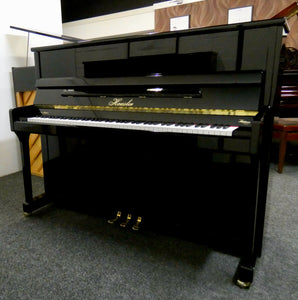
- Regular price
- Sold out
- Sale price
- £9,995.00
-
Blüthner Style 4 Baby Grand in flame mahogany gloss finish
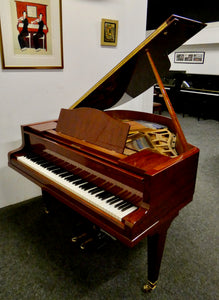
- Regular price
- £12,995.00
- Sale price
- £12,995.00
-
Blüthner Model A Upright Piano in Mahogany Gloss Finish
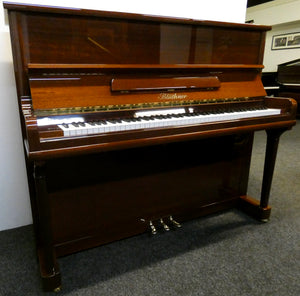
- Regular price
- Sold out
- Sale price
- £15,500.00
-
Blüthner Model A Upright Piano in Black High Gloss Finish
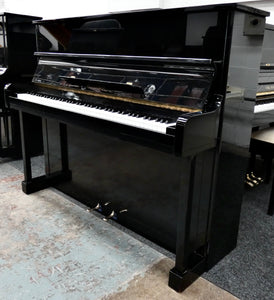
- Regular price
- Sold out
- Sale price
- £108,995.00
-
Blüthner Model B Upright Piano in German Walnut Gloss Cabinet
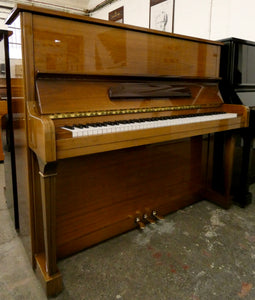
- Regular price
- Sold out
- Sale price
- £338,995.00
-
Blüthner Model 9 Grand Piano in German Walut Cabinetry
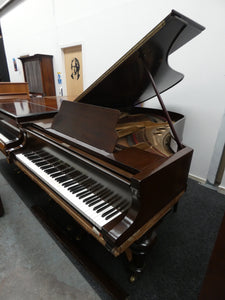
- Regular price
- Sold out
- Sale price
- £1,001,500.00
-
Blüthner 3A Upright Piano in Rosewood Cabinetry With Fold Down Music Desk
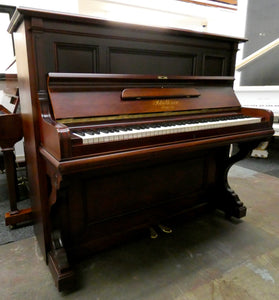
- Regular price
- Sold out
- Sale price
- £999,999,999.00
-
Blüthner Model D Upright Piano in Flame Mahogany Cabinet
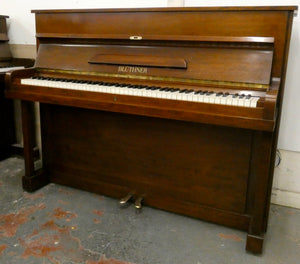
- Regular price
- Sold out
- Sale price
- £999,999,999.00
-
Blüthner Model 4a Grand Piano in German Walnut
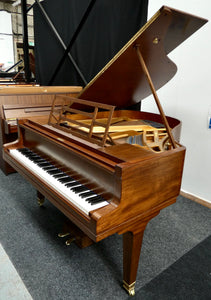
- Regular price
- Sold out
- Sale price
- £10,000,000,000,000,000.00















